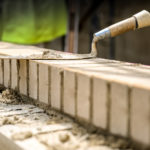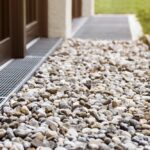How Can You Tell if Winter Weather Has Damaged Your Concrete?
Concrete is one of the hardest, most durable building materials there is, but it’s still susceptible to damage from the elements. This is especially true in the cold winter months, when the ice, snow and generally harsh conditions build up and affect even the most durable of materials.
While it may not be the first thing you look for considering how durable concrete usually is, there are signs that indicate winter concrete damage. Read on for more information on winter concrete damage to discover how to tell if winter weather has damaged your concrete.
Freezing and thawing cycles
Extreme cold and heat causes materials to contract and expand. This is true of water, which you can see visual representations of when it turns to ice and takes up more physical space than liquid water. This is also true of concrete.
Though it may not be as visible, concrete will expand and contract when the temperature fluctuates between the seasons. There’s also the fact that concrete is porous, and water will get into it and remain trapped inside. This means that when the weather gets below freezing, the water will expand within the concrete, which could cause winter concrete damage.
This damage only intensifies as it endures more cycles of freezing and thawing throughout the seasons over a period of several years. The expansion stresses the concrete slabs from the inside, which can lead to cracking and flaking. If you start to see cracks in your concrete, no matter how small, these may have been caused by the contraction and expansion from water freezing inside the porous concrete.
Salt deicing
One way to keep concrete clear of snow and ice is to use a salt-based deicer. This is effective for driveways, sidewalks, stairs and other types of walkways. But while this can be an effective solution when it comes to keeping an area safe and ice-free, it may also cause damage to concrete over time.
This is because deicing salts often contain other chemicals to work their magic. These chemicals can lead to the concrete being more susceptible to water seeping inside of it. When more water gets into a slab of concrete, the likelihood of winter concrete damage increases.
How to limit winter concrete damage
While it is not possible to entirely prevent concrete damage arising from the harsh weather that winter can bring, there are some ways to limit winter concrete damage. One way is to apply a weather sealant to the concrete before winter really kicks into high gear. This will help prevent too much water from getting inside the concrete.
Another way to prevent winter concrete damage is to use an organic, salt-free deicer, or only use a small amount of salt deicer and don’t let slush sit on the concrete for too long.
If you notice that winter weather has damaged your concrete, it’s important to get it fixed as soon as possible to avoid further damage. When you need professional, high-quality concrete repair, contact Langenfeld Masonry & Concrete today.
More...
Categorised in: Concrete Contractor




